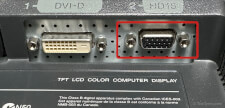ADC
Stands for "Analog-to-Digital Converter."
An ADC is a hardware component that converts an analog signal into a digital signal. Computers and other digital devices can only handle digital data, so getting input from an analog device requires processing by an ADC. Many kinds of input go through an ADC, including audio and digital photography. An ADC performs the opposite function of a digital-to-analog converter (DAC).
ADCs convert an analog signal into a digital one using two primary steps. First, the ADC samples an analog signal at regular intervals and measures its amplitude. How often the ADC makes samples is called a sample rate. Next, it quantizes each sample to a specific value within a numerical range, rounding the measurement to the nearest numerical value. The number of bits used to store each sample's value determines the ADC's resolution. For example, an 8-bit ADC represents an analog signal using 256 discrete values (2^8). The overall quality and accuracy of the resulting digital signal typically improves as the sample rate and resolution increase.
Several common computer workflows use ADCs to convert analog data into digital data. Every computer sound card uses an ADC to convert the audio signal coming in through its microphone and line-in ports. Video input devices like a converter box or tuner card convert an analog video signal into digital video. Digital camera sensors convert the color and intensity of the light that hits each pixel into digital data. Finally, LCD monitors and televisions that support VGA or composite video connections use an ADC to convert the analog video signal into digital data that controls the color of each pixel on the screen.
 Test Your Knowledge
Test Your Knowledge